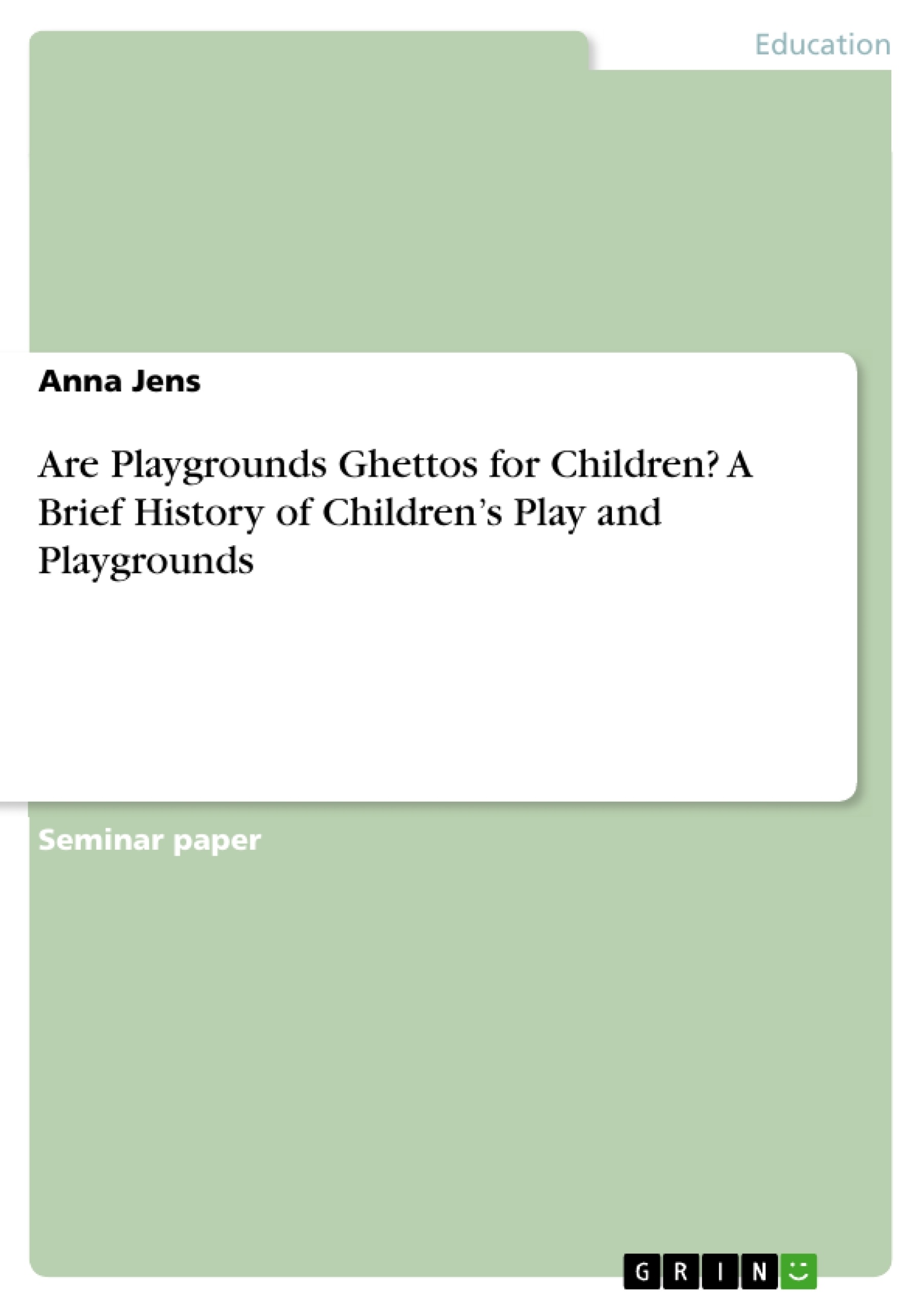The goal of this paper is to answer the question, if it is legitimate to call playgrounds “ghettos for children”, as is often done in literature. Children’s play is an essential part of playgrounds, and therefore by looking at the history of the acceptance of children’s play, one can also see how children and their culture have been viewed in Western societies. By having a closer look at the term
“ghetto“ as well as which attributes, according to some critics, these two places have (or do not have) in common, one can come to a solution why the term ”ghetto“ has often been misused and trivialized in this context.
But are they really „ghettos“, places where a minority is separate from the rest of the community, or are they rather a sort of oasis, refuges in an otherwise hostile environment?
Inhaltsverzeichnis (Table of Contents)
- Abstract
- Introduction
- A Brief History of Children's Play and Playgrounds
- Are Playgrounds Really Ghettos?
- Playgrounds as a Mirror of Childhood in Western Society
- Are Playground Ghettos for Children?
- References
Zielsetzung und Themenschwerpunkte (Objectives and Key Themes)
This paper aims to determine if the term "ghettos for children" is a legitimate way to describe playgrounds, a common assertion in literature. The analysis examines the historical development of children's play, demonstrating how Western societies have perceived children and their culture. By investigating the term "ghetto" and its attributes, the paper aims to understand why this term has been misused and trivialized in the context of playgrounds.
- The historical evolution of children's play and playgrounds.
- The relationship between playgrounds and the perception of childhood in Western societies.
- The criticism of playgrounds as "ghettos for children" and the underlying reasons.
- The significance of playgrounds as spaces for children's play and development.
- The need for a nuanced understanding of playgrounds and their role in shaping children's experiences.
Zusammenfassung der Kapitel (Chapter Summaries)
- Abstract: This section introduces the research question and outlines the paper's approach to understanding the criticism of playgrounds as "ghettos for children." It highlights the importance of exploring the historical context of children's play and the concept of "ghetto" itself.
- Introduction: The introduction establishes the context for the debate surrounding playgrounds, highlighting the prevailing perception of playgrounds as spaces for joy and delight, yet also subject to criticism as restricted areas of control and suppression. The author introduces the central argument of the paper and outlines its scope and methodology.
- A Brief History of Children's Play and Playgrounds: This section provides a historical overview of children's play and playgrounds, examining how the perception of children and their play has evolved over time. It explores the views of Greek philosophers and how the image of children's play has changed throughout the last millennium. The section also discusses the development of playgrounds and their relationship to societal views on childhood.
- Are Playgrounds Really Ghettos?: This section delves into the criticism of playgrounds as "ghettos for children." It examines the arguments presented by critics, exploring the reasons behind this characterization. The author analyzes the term "ghetto" and its attributes, comparing them to the characteristics of playgrounds.
- Playgrounds as a Mirror of Childhood in Western Society: This section examines playgrounds as a reflection of Western societies' views on childhood. It explores the social and cultural contexts that have shaped the design and function of playgrounds, highlighting how these spaces reflect broader societal attitudes towards children and their development.
Schlüsselwörter (Keywords)
The main keywords and focus topics of this paper include children's play, playgrounds, "ghettos for children," childhood studies, Western society, history of play, social construction of childhood, and the role of playgrounds in child development.
- Quote paper
- Anna Jens (Author), 2014, Are Playgrounds Ghettos for Children? A Brief History of Children’s Play and Playgrounds, Munich, GRIN Verlag, https://www.grin.com/document/286966



